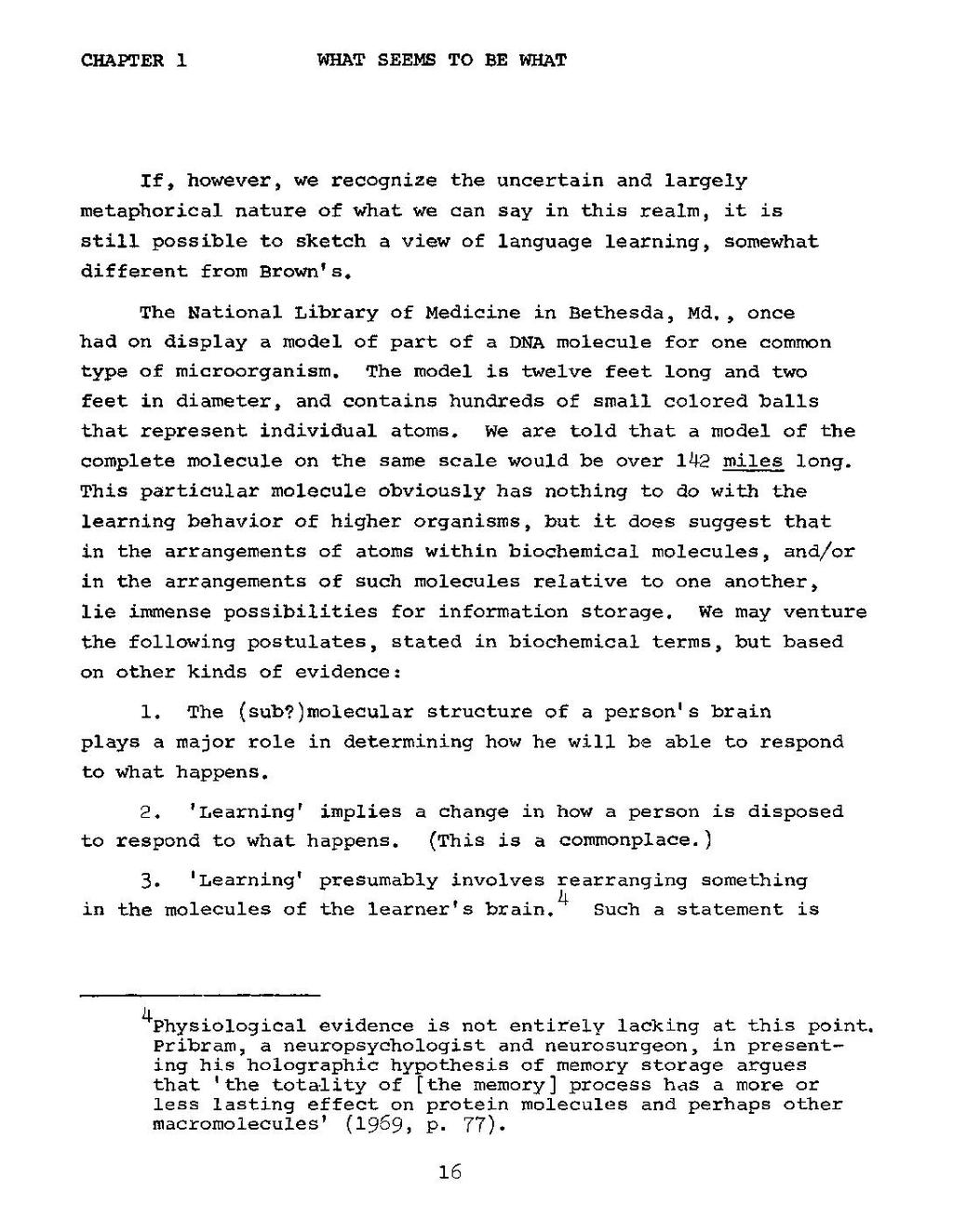If, however, we recognize the uncertain and largely metaphorical nature of what we can say in this realm, it is still possible to sketch a view of language learning, somewhat different from Brown's.
The National Library of Medicine in Bethesda, Md., once had on display a model of part of a DNA molecule for one common type of microorganism. The model is twelve feet long and two feet in diameter, and contains hundreds of small colored balls that represent individual atoms. We are told that a model of the complete molecule on the same scale would be over 142 miles long. This particular molecule obviously has nothing to do with the learning behavior of higher organisms, but it does suggest that in the arrangements of atoms within biochemical molecules, and/or in the arrangements of such molecules relative to one another, lie immense possibilities for information storage. We may venture the following postulates, stated in biochemical terms, but based on other kinds of evidence:
1. The (sub?)molecular structure of a person's brain plays a major role in determining how he will he able to respond to what happens.
2. 'Learning' implies a change in how a person is disposed to respond to what happens. (This is a commonplace.)
3. 'Learning' presumably involves rearranging something in the molecules of the learner's brain.[1] Such a statement is
- ↑ Physiological evidence is not entirely lacking at this point. Pribram, a neuropsychologist and neurosurgeon, in presenting his holographic hypothesis of memory storage argues that 'the totality of [the memory] process has a more or less lasting effect on protein molecules and perhaps other macromolecules' (1969, p. 77).
16
